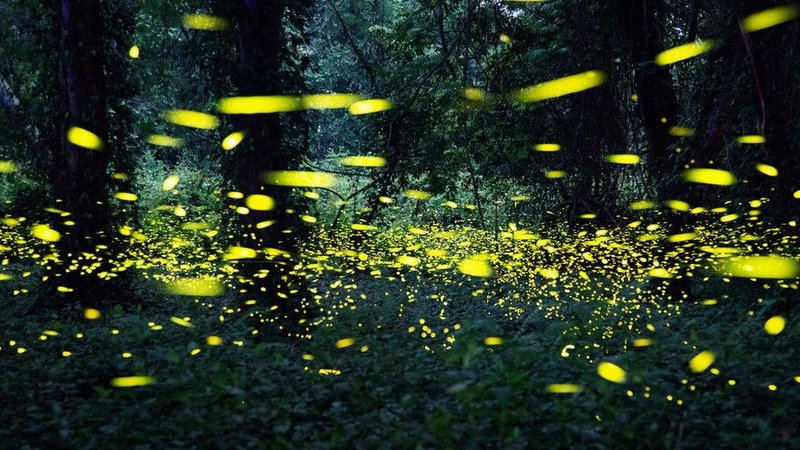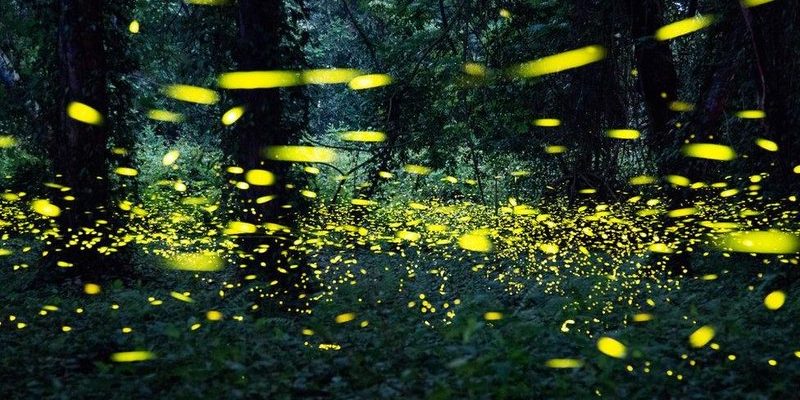
Picture your garden as a vibrant community, where each creature plays a role. Glow worms, specifically the larvae of beetles in the Lampyridae family, are not just beautiful to look at; they also have an important purpose. They help control pest populations by preying on small insects. Having them around can be beneficial! Let’s dive into some tips on how to create a friendly environment for glow worms while also keeping your garden healthy and thriving.
Understanding Glow Worms
Before you can coexist with glow worms, it’s essential to understand what they are and how they live. Glow worms aren’t actually worms at all; they’re the larvae of certain beetles. The mesmerizing glow you see at night comes from a series of chemical reactions in their bodies. They use this light to attract insects, which they then catch and eat.
What’s even more fascinating is their life cycle. Glow worms undergo several stages, including eggs, larvae, and finally, mature beetles. In their larval stage, they can glow for weeks, creating that enchanting effect in the dark. The adults, however, don’t glow and focus mainly on breeding. Isn’t it interesting how these little creatures have such unique life stages?
Creating a suitable environment for these larvae can encourage them to thrive. A damp, sheltered area with plenty of organic matter is ideal. They love rich compost, so if you have an area where you let leaves and clippings decompose, you’re setting the stage for glow worm success!
Creating a Glow Worm-Friendly Environment
To help glow worms flourish in your garden, it’s important to provide a habitat that meets their needs. Since they thrive in dampness, consider adding a few elements to your garden that can keep moisture levels high. For instance, incorporating a small water feature or regularly misting parts of your garden can create a perfect microclimate.
Additionally, try to limit the use of pesticides and chemical fertilizers. Many of these chemicals can be harmful to glow worms and their food supply. Instead, consider using natural compost or organic gardening practices. You’d be surprised at how quickly your garden can transform when you give it the care it needs.
Another tip is to keep your garden a bit wild. While it’s nice to have neat rows of plants, allowing some wildflowers or native plants to grow can attract a wider range of insects. This will not only draw in glow worms but also support other wildlife in your garden, creating a balanced ecosystem.
Lighting and Glow Worms: What You Should Know
When thinking about glow worms, it’s critical to consider how artificial lighting affects them. You might be wondering if bright garden lights can cause problems. The answer is yes! Glow worms rely on darkness to attract mates and prey. So, if you have bright lights shining down on your garden, it could disrupt their natural behavior.
To create a glow worm-friendly space, try using softer, warmer lights or solar-powered lanterns. If you must have bright lights, consider placing them away from areas where you’ve seen glow worms. This way, you can enjoy your garden at night without disturbing these charming creatures.
And if you’re keen on nighttime gardening, you might want to pick your hours. Aim for twilight or after dark when glow worms are most active. Stepping into your garden during these quiet hours can be a calming experience, letting you witness the beauty of these glowing larvae while you tend to your plants.
Protecting Glow Worm Habitats
Preserving the natural habitat of glow worms is essential for their survival. One of the biggest threats to their habitat is urban development and improper garden care. If you want to protect these enchanting insects, consider implementing some simple steps in your garden routine.
Avoid disturbing areas where glow worms live, especially during their breeding season. Raking up too many leaves or over-pruning can disrupt their environment. Instead, try to keep those leaf litter layers intact; they provide shelter and food for the glow worms.
You can also plant native species that naturally thrive in your area. These plants require less maintenance and help sustain local wildlife, including glow worms. By nurturing a diverse range of plants, you’re creating a balanced ecosystem that can support various forms of life.
Common Misconceptions About Glow Worms
If you’re new to the world of glow worms, you might have fallen for some common misconceptions. One of the biggest myths is that glow worms are dangerous or disrupt other wildlife. In reality, these creatures are mostly harmless to humans and other animals. They play a crucial role in controlling pest populations, which can actually help keep your garden healthy.
Another misconception is that glow worms can only survive in specific environments. While they prefer moist and dark areas, they can adapt to various conditions, as long as their basic needs are met. By educating yourself about glow worms, you can appreciate their presence in your garden even more.
And let’s not forget about their fascinating bioluminescence! Some people believe glow worms can light up large areas, but their glow is relatively dim and serves a specific purpose—drawing in prey. This makes encountering them all the more special, as you’ll spot their soft light among your plants.
Enjoying Glow Worms Without Disruption
To fully appreciate the magic of glow worms in your garden, you should enjoy their presence without causing disruptions. One fun way to do this is to create a dedicated glow worm area. This could be a small section where you allow a few wild plants to grow, making it a cozy refuge for these little beings.
Avoid the urge to touch or handle them. While they may look tempting to pick up, handling glow worms can cause stress and harm. Instead, observe them from a distance. Make it a family activity to spend quiet evenings in your garden, watching the glow worms do their thing. You might even consider keeping a journal to note your observations!
And speaking of quiet evenings, consider how you can create a comfortable space for yourself and your family. Setting up a comfy chair or a small seating area can turn your nighttime garden visits into memorable family time. Just imagine sipping a cup of tea while watching the glow worms dance among the plants!
Final Thoughts on Coexisting with Glow Worms
Coexisting with glow worms in your garden can be a beautiful experience if you take the time to understand their needs and create a welcoming environment. These glowing wonders not only add charm to your nighttime garden but also contribute to a healthy ecosystem.
By following the tips shared in this article, you can ensure that your garden becomes a thriving habitat for glow worms. Remember, it’s all about balance—combining maintenance with a little wildness. So, next time you see those tiny lights flickering in your garden, you’ll know you’re part of something wonderful. Embrace the magic, protect their habitat, and enjoy the beauty of nature right in your backyard!

